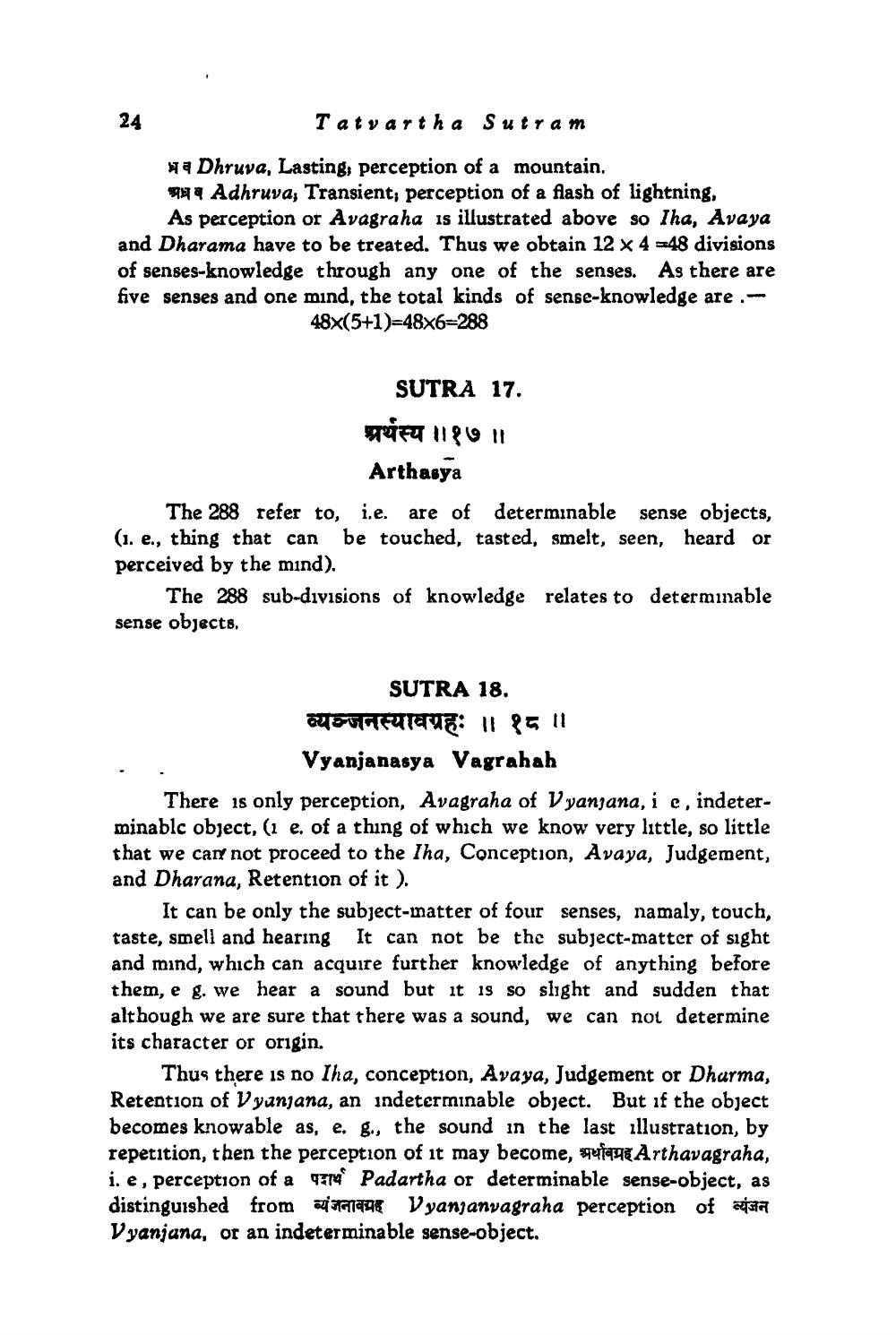________________
Tatvartha Sutram
wa Dhruva, Lasting, perception of a mountain. 999 Adhruva, Transient; perception of a flash of lightning,
As perception or Avagraha is illustrated above so Tha, Avaya and Dharama have to be treated. Thus we obtain 12 x 4 =48 divisions of senses-knowledge through any one of the senses. As there are five senses and one mind, the total kinds of sense-knowledge are.
48x(5+1)=48x6=288
SUTRA 17. PİRT 11869 11
Arthasya The 288 refer to, i.e. are of determinable sense objects, (1. e., thing that can be touched, tasted, smelt, seen, heard or perceived by the mind).
The 288 sub-divisions of knowledge relates to determinable sense objects.
SUTRA 18. ausorFUTEUE: 11 85 11 Vyanjanasya Vagrahah
There is only perception, Avagraha of Vyanjana, i e, indeterminablc object, (1 e. of a thing of which we know very little, so little that we care not proceed to the Tha, Conception, Avaya, Judgement, and Dharana, Retention of it ).
It can be only the subject matter of four senses, namaly, touch, taste, smell and hearing It can not be the subject-matter of sight and mind, which can acquire further knowledge of anything before them, e g. we hear a sound but it is so slight and sudden that although we are sure that there was a sound, we can not determine its character or origin.
Thus there is no Iha, conception, Avaya, Judgement or Dharma, Retention of Vyanjana, an indeterminable object. But if the object becomes knowable as, e. g., the sound in the last illustration, by repetition, then the perception of it may become, quique Arthavagraha, i. e, perception of a 97749 Padartha or determinable sense-object, as distinguished from 316/1946 Vyanjanvagraha perception of SA Vyanjana, or an indeterminable sense-object.




